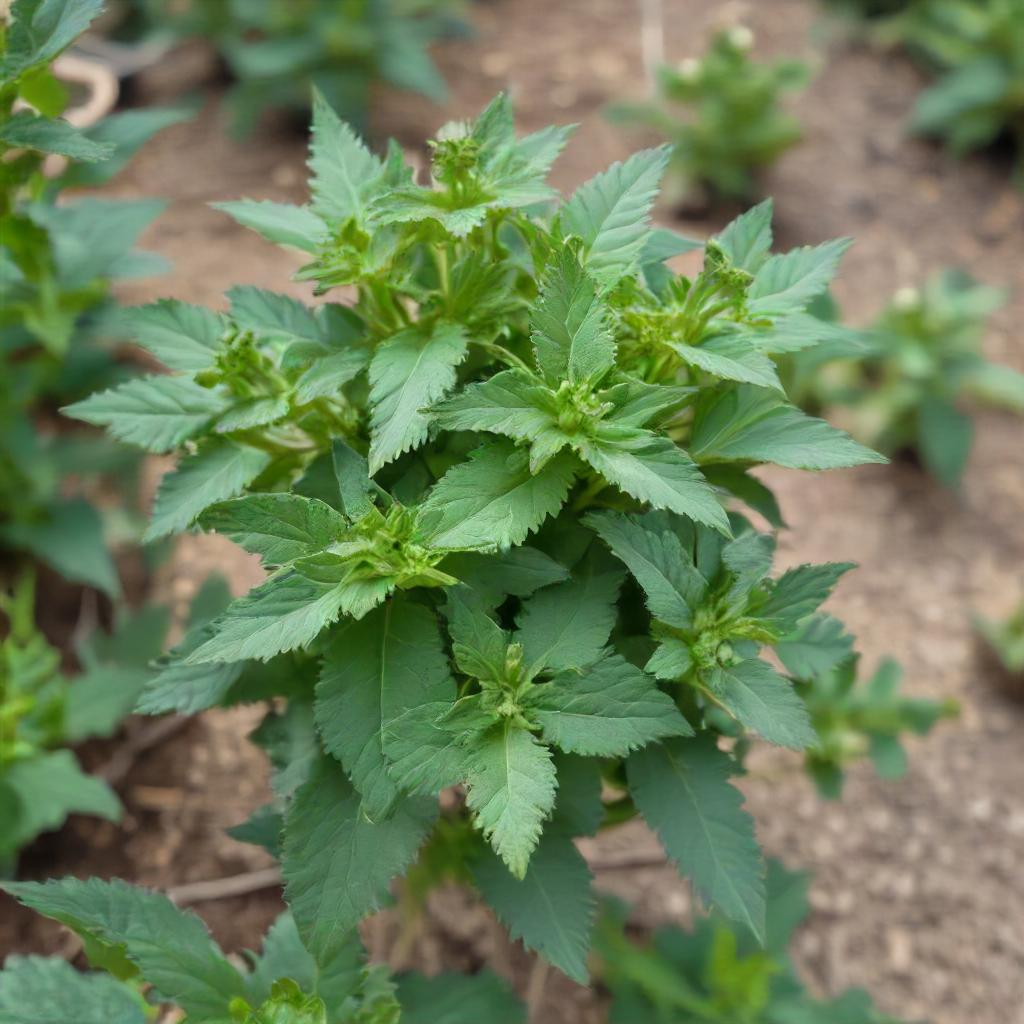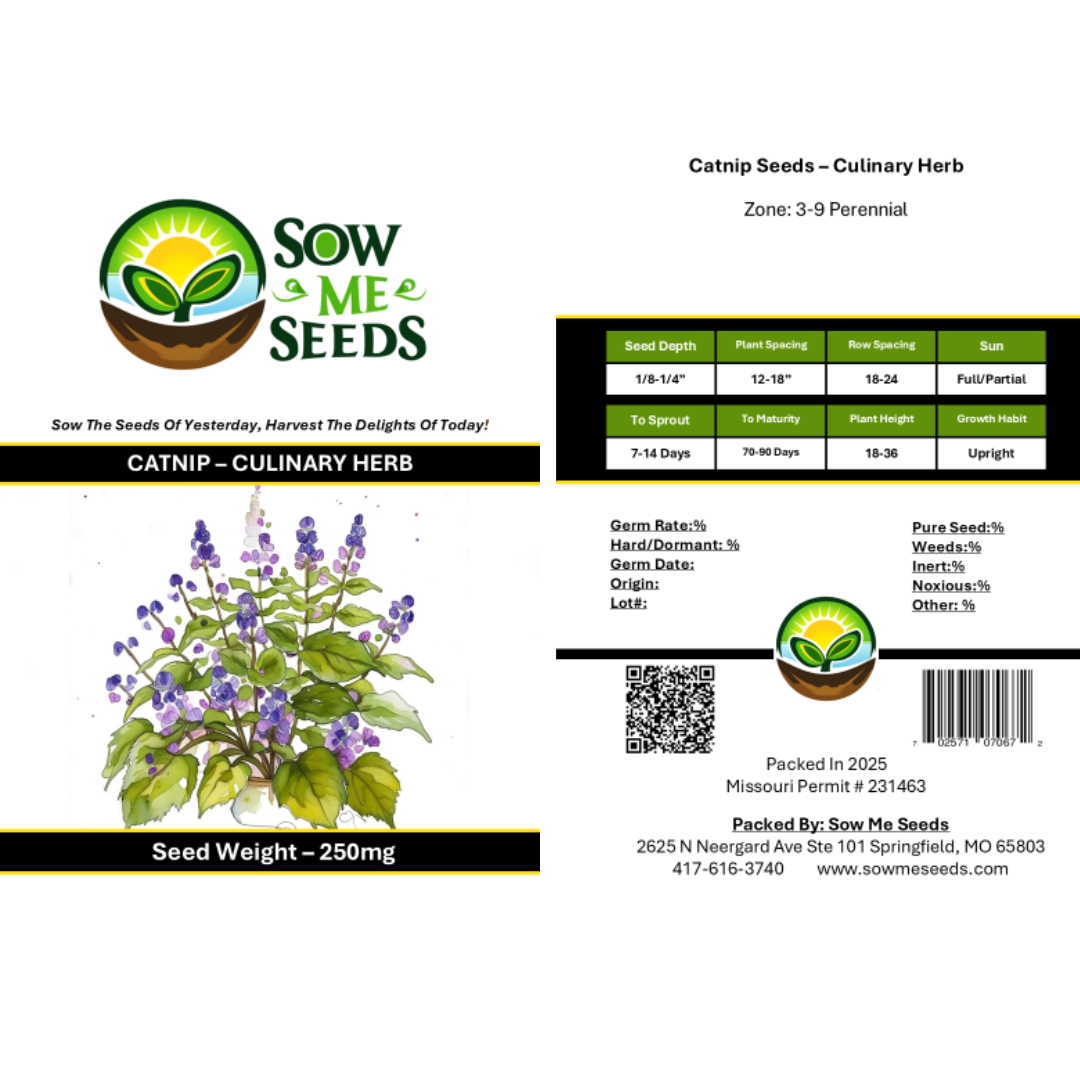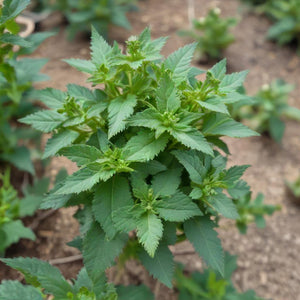- Hardiness Zone: 3-9 Perennial
Seed Depth: 1/8–1/4 inch
Seed Spacing: 12–18 inches
Row Spacing: 18–24 inches
Sunlight: Full sun to partial shade
Days to Sprout: 7–14 days
Days to Maturity: 70–90 days
Growth Habit: Upright, bushy perennial
Sunlight: Prefers full sun but tolerates partial shade, especially in hotter climates.
Soil Type: Thrives in well-drained soil with a pH of 6.0–7.5. Adding compost improves growth.
When to Plant: Start seeds indoors 6–8 weeks before the last frost or sow directly outdoors after the danger of frost has passed.
Direct Sowing: Plant seeds 1/8–1/4 inch deep, spacing them 12–18 inches apart. Thin seedlings to maintain proper spacing.
Indoor Sowing: Start seeds in trays or small pots and transplant when seedlings are 4–6 inches tall.
Succession Planting: Not necessary; catnip is a perennial that will regrow each year.
Watering: Water consistently but avoid overwatering; catnip tolerates some drought once established.
Fertilizing: Apply a balanced fertilizer or compost at planting to encourage healthy growth. Avoid over-fertilizing, which can reduce its aromatic potency.
Pruning: Prune regularly to promote bushy growth and prevent the plant from becoming leggy. Remove flower heads to extend the growing season.
Pest and Disease Control: Generally pest-resistant, but watch for aphids and spider mites. Use organic pest controls if necessary.
When to Harvest: Harvest leaves and stems once plants reach 6–8 inches tall. For optimal potency, harvest just before flowering.
How to Harvest: Use scissors or a knife to snip stems, leaving at least 2 inches of growth to encourage regrowth.
Seed Collection: Allow flowers to dry on the plant and collect seeds from the spent blooms.
Storing Seeds: Store seeds in an airtight container in a cool, dry place.
Why You’ll Love It
Cat Favorite: Produces a natural compound (nepetalactone) that cats adore — perfect for toys, treats, or fresh garden nibbling.
Herbal Uses: Traditionally used in calming teas and natural insect repellents.
Pollinator Magnet: Flowers attract bees, butterflies, and beneficial insects to your garden.
Low Maintenance: Drought tolerant and grows well in poor soil — perfect for borders, beds, or containers.
Plant Characteristics
Height: 18–36 inches
Growth Habit: Upright, bushy perennial with square stems and fuzzy, toothed leaves
Leaf Type: Soft, gray-green, mint-scented foliage
Days to Maturity: 70–90 days
Hardiness: Perennial in zones 3–9
Flavor and Culinary Uses
Flavor: Lightly minty with a subtle, herbal aroma — typically used dried or steeped
Culinary Uses: Common in calming teas and homemade herbal blends (for humans); dried for cat treats and toys
Companion Planting Tips
Good Companions: Collards, squash, potatoes, and beets
Avoid Planting Near: Basil or moisture-loving herbs (catnip prefers drier soil)
Bonus Benefit: Helps repel aphids, squash bugs, and flea beetles — makes a great border herb in vegetable gardens
Common Issues and Solutions
Overgrowth: Prune regularly to prevent spreading and encourage bushier growth
Leggy Plants: Plant in full sun and pinch back early stems to promote branching
Low Germination: Cold stratify seeds for better results — refrigerate seeds for 1–2 weeks before sowing
Seeds Per Packet
| 250mg | Approximately 425 |
| 1g | Approximately 1,700 |
Why You’ll Love It
Cat Favorite: Produces a natural compound (nepetalactone) that cats adore — perfect for toys, treats, or fresh garden nibbling.
Herbal Uses: Traditionally used in calming teas and natural insect repellents.
Pollinator Magnet: Flowers attract bees, butterflies, and beneficial insects to your garden.
Low Maintenance: Drought tolerant and grows well in poor soil — perfect for borders, beds, or containers.
Plant Characteristics
Height: 18–36 inches
Growth Habit: Upright, bushy perennial with square stems and fuzzy, toothed leaves
Leaf Type: Soft, gray-green, mint-scented foliage
Days to Maturity: 70–90 days
Hardiness: Perennial in zones 3–9
Flavor and Culinary Uses
Flavor: Lightly minty with a subtle, herbal aroma — typically used dried or steeped
Culinary Uses: Common in calming teas and homemade herbal blends (for humans); dried for cat treats and toys
Companion Planting Tips
Good Companions: Collards, squash, potatoes, and beets
Avoid Planting Near: Basil or moisture-loving herbs (catnip prefers drier soil)
Bonus Benefit: Helps repel aphids, squash bugs, and flea beetles — makes a great border herb in vegetable gardens
Common Issues and Solutions
Overgrowth: Prune regularly to prevent spreading and encourage bushier growth
Leggy Plants: Plant in full sun and pinch back early stems to promote branching
Low Germination: Cold stratify seeds for better results — refrigerate seeds for 1–2 weeks before sowing
Seeds Per Packet
| 250mg | Approximately 425 |
| 1g | Approximately 1,700 |




Share and get 15% off!
Simply share this product on one of the following social networks and you will unlock 15% off!